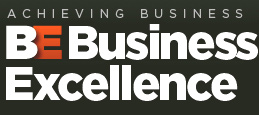Every organisation should be drawing on the skills and strength of those individuals who can engage, inspire and motivate with ease.
It may be hard for many leaders to picture what their role will be like in, say, five years’ time. Try visualising what the company structure you lead may look like in 2017. Corporate structures are evolving at such a pace, frequently over-shadowed by the uncertain state of the economy, that it is little wonder many business leaders these days don’t even attempt to project that far ahead.
Yet if they were brave enough to extrapolate from their current standpoint, taking all factors into account, they may start to perceive that they could well be hindering their own growth and progress by the sheer fact that they are not taking in the whole picture; in other words they are overlooking some vital facts which could enable them to more effectively restructure the way they manage their workforce.
Over the last couple of years, many business leaders have focused on survival ahead of growth. Those who have focused on identifying potential opportunities for expansion and how to capitalise on those opportunities have had to do so while also spending increasing amounts of time supporting their teams and providing the encouragement they require at a time when markets are uncertain and concerns about job security are increasing. The net effect is that their own creativity and energy has been eroded which, in turn, has ultimately affected everyone.
Because corporate realignment has become an essential process, not just due to the prevailing economic conditions, but also due to a radical transformation of industry, societies and cultures, managers must rethink their internal strategies for staff management if they are to get the best from their people and retain those who will lead their companies into greater prosperity.
Recently, we discussed the role of internal influencers with a number of business leaders, focusing on who they felt they could rely on within their own organisations to positively influence their teams. Not surprisingly, most of them had not given a great deal of thought to this, even though they had all been influenced by others at many points in their own careers. But while the role of internal influencers may still be in its infancy, this is one of the key elements of ‘the bigger picture’ which is poised to become a defining point for many organisations.
The term ‘influencer’ has been more commonly associated with external activities such as politics, professional business advisors, academics, and social media. Just as we are seeing the rise of influencers within the ranks of social media, the like of which is unprecedented, so too are we recognising their value in other walks of life. An influencer is an individual who is generally very passionate about what they do. They will produce and share material that is relevant and appealing to the community within which they operate.
Likewise, influencers within an organisation share many of these traits. Importantly, they are individuals towards whom others gravitate, who engender trust and who, as a consequence, can engage and motivate with ease. They are generally goal-oriented and focused, caring more about outcomes rather than processes, and they avoid getting embroiled in office politics.
In a similar way, internal influencers within organisations can amplify messages across a wider group of people, helping to reduce potential ambiguities and possible damage to motivation that may arise when management edicts are filtered down from above, and managers apply their own ‘spin’ thereto. In this context, influencers often have a large network which wields, well, influence. By virtue of the fact that they generally communicate horizontally across an organisation they have also accumulated a collective intelligence, hence the ability to engage with their colleagues.
Too often, success in a company is compartmentalised rather than spread across the entire organisation. This applies equally to all departments from sales and marketing to human resources and IT. As markets continue to change inexorably, now is the perfect time for business leaders to pull people out of their silos and identify their internal influencers. They need to learn how to collaborate with them and nurture them, with the aim of enhancing productivity and creating deeper levels of communication and agility within the organisation.
Identifying influencers and establishing how best to manage them does not require major organisational shifts. Many will point to a non-hierarchical management structure where accountability and responsibility are more equally divided; but in many organisations this is neither practical nor desirable. Instead, determining what drives internal champions and creating an environment which empowers them to grow to their full potential is key. It is about structuring an informal pool of physical, intellectual, emotional and spiritual strength that drives personal achievement and, in turn, inspires others to follow. Making influencers aware of their strengths and their value within an organisation and ensuring their collaboration is supported will motivate them to encourage others and spread the ‘positive attitude’.
Effectively this is about a major shift in leadership mindset—acknowledging that the corporate environment might be increasingly challenging; however, that it is also faster, smarter and much more connected than it ever was before. The future leader needs to dive into this connectivity and engage the engagers.
